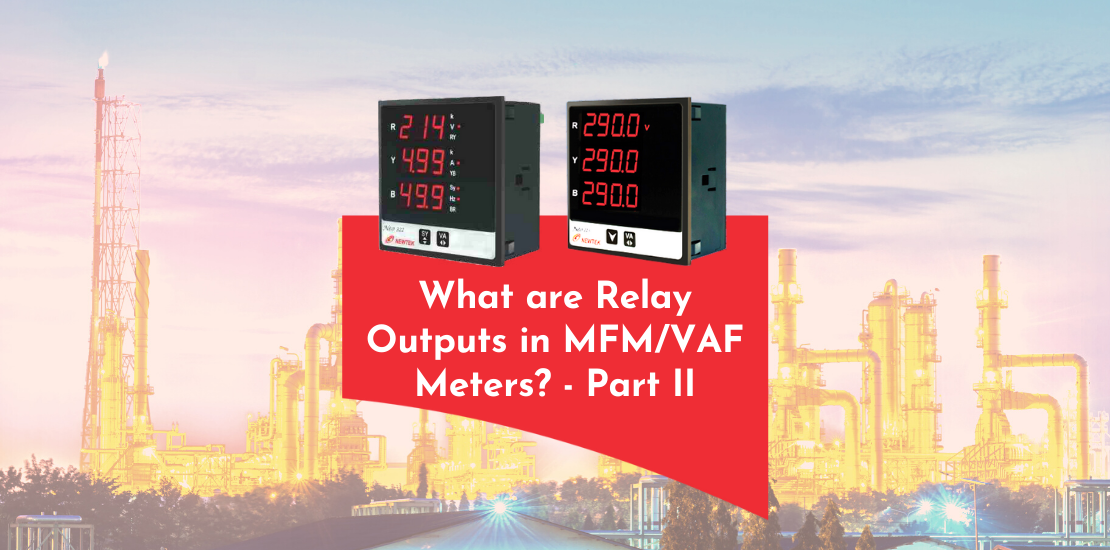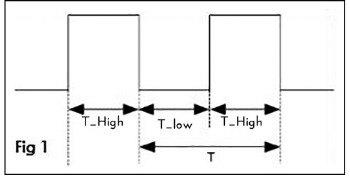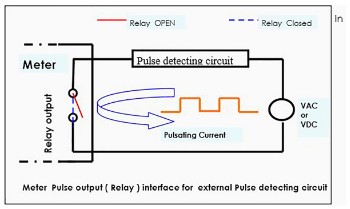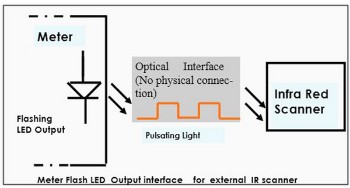- July 9, 2021
- Posted by: Dyaneshwar Nirmale
- Category: Digital Meters

This section discusses relay outputs in MFM meters configured as “Pulse Otput”. Pulse output is related to energy measurement, and hence, is not applicable to VAF meter as the latter does not support Power/Energy measurement.
What is a Pulse Output?
Pulse output in a Meter comes either as a flashing LED or a switching relay. However, the concept remains the same for both the versions.

Pulse output is a train of pulses output by meter either in the form of switching relay or flashing LED. The time between pulses (or frequency of pulses) is proportional to
the Power/Energy measured by the meter. Refer to Fig 1 for a typical pulse output from a meter. The pulse consists of time period T = T_high + T_low. T_high indicates the period for which the Pulse transmitter inside the meter is ON.
The width of T_high can be programmed to few fixed values like 60 msec or 100 msec or 200 msec. Once T_high is programmed, it remains fixed. The time between the two T_high pulses is T_low. It is a variable time period and depends on the power/energy being measured by the Meter.
The relation between this variable time and Energy is fixed by a factor called as Meter Constant. For example, Meter Constant = 1000 pulses/kWhr. As the total time period T = T_hight + T_low and T_high is fixed, T varies based on the measured power/Energy.
If Energy/Power consumed is high, T will be shorter and more pulses will be output by meter in a given time. On the other hand, if Energy/Power consumed is Low, T will be longer and fewer pulses will be output by the meter.
Energy accumulated at a particular instant can be calculated by counting the number of pulses and by dividing it by the Meter Constant specified by the manufacturer of the meter. Meter constant is constant expressed as No of pulses/kWhr. The value of Meter constant varies from manufacturer to manufacturer.
Example: Meter constant
specified for a MFM is
1000 pulses/kWhr.

Calculating Energy: If you accumulate 500 pulses from
the pulse output of the meter,
Energy count will be = 500 pulses/1000 = 0.5 kWhr.
Calculating Power: Energy (E) = Power (P) x time (T). For meter constant = 1000 pulses/kWhr is same as 1 pulse/1 Whr. 1 Whr = 1Wx 1 hr = 1W x 3600 sec = 3600 Wsec. 1 Whr = 3600 Wsec.
Therefore instantaneous power P(W) = E/T = 3600 Wsec/T sec
where T is the time between the falling edge of each pulse as shown in Fig 1. If 500 pulses were accumulated in 30 minutes (1800 secs) then T = 1800 secs/500 pulses = 3.6 sec per pulse.
Therefore Power P (W) = 3600 WSec/3.6 sec = 1kW.

In case of Meter with relay output, the changeover contact will switch ON and OFF while the external supply in series with contact would produce current pulses proportional to power/Energy. Since the Meter uses Fast switching relays having max switching time in the range of 5 msec to 10 msec, there is no issue for relays to follow the pulse timing.


